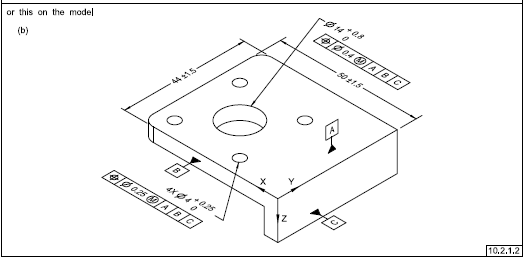greenimi
Mechanical
- Nov 30, 2011
- 2,391
(I asked this question in a different thread - with no answer- and I am going to ask it on a separate discussion too)
Do you think it is ALLOWED (per rules, regulations and stipulations) by the ASME standard to dimension a feature in an ISO view?
Scenario:
A 2D drawing is chosen as a method to communicate the design intent. Should/ shall all the feature's definition be shown in the applicable 2D views (front, left, right, section views, details)?
(NOT into the 3D ISO view). Or, maybe, you can have some of the dimensions, tolerances, notes, etc. shown in the ISO view?
My opinion (and I might be very well wrong and I cannot find a definitive answer in the ASME standard)
ISO view it is there / it is shown for easy to understand the part/drawing, but no dimesnions, tolerances should be part of the definition on the ISO view.
Do you think it is ALLOWED (per rules, regulations and stipulations) by the ASME standard to dimension a feature in an ISO view?
Scenario:
A 2D drawing is chosen as a method to communicate the design intent. Should/ shall all the feature's definition be shown in the applicable 2D views (front, left, right, section views, details)?
(NOT into the 3D ISO view). Or, maybe, you can have some of the dimensions, tolerances, notes, etc. shown in the ISO view?
My opinion (and I might be very well wrong and I cannot find a definitive answer in the ASME standard)
ISO view it is there / it is shown for easy to understand the part/drawing, but no dimesnions, tolerances should be part of the definition on the ISO view.


